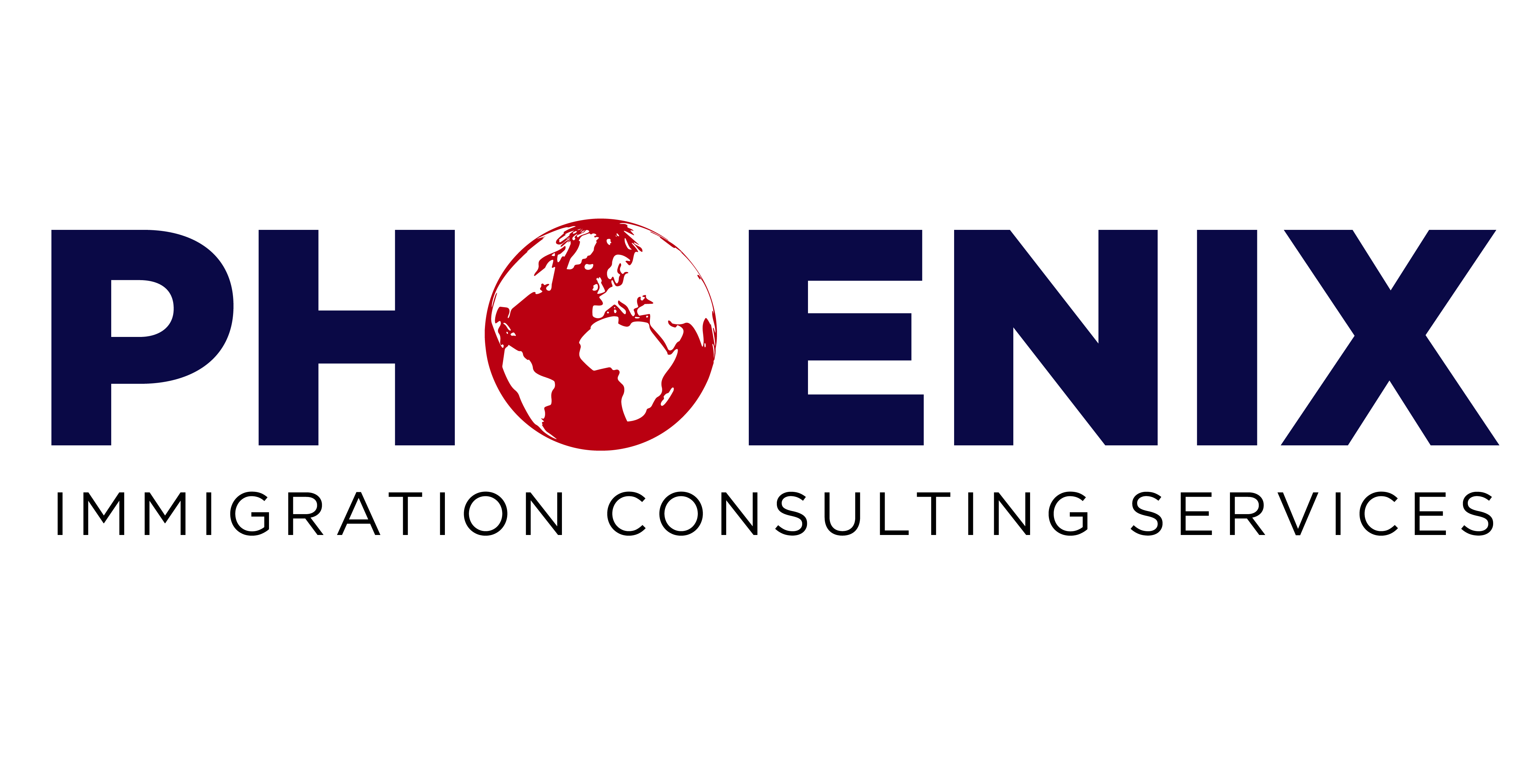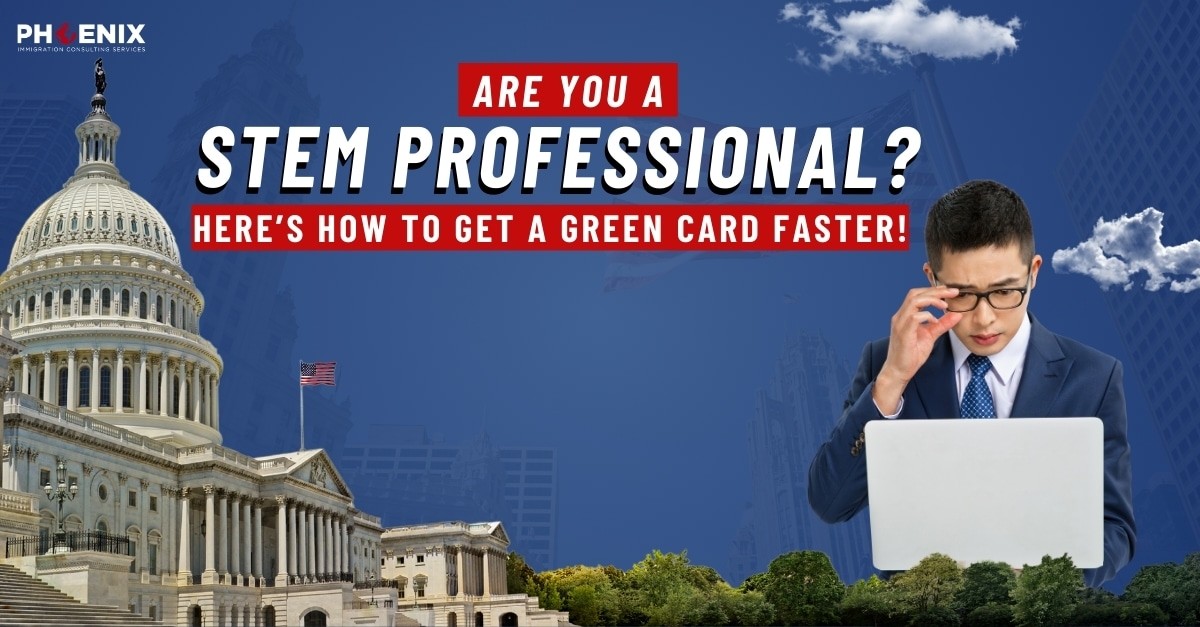The US has been and continues to be at the forefront of global innovation and technology. In the competitive landscape of research, information technology, and even healthcare, it is important for the US to maintain its competitive edge—which relies heavily on a skilled human workforce. Like many developed countries, the US faces a skill gap and a shortage of qualified professionals due to modern challenges, including pandemics, global unrest, and climate change.
This shortage has created a significant opportunity for global talent to contribute to key industries while securing a future in one of the world’s strongest economies through permanent residency. With a range of work permits and green card categories, the US is actively working to attract and retain the world’s top minds.
The expansion of these industries has created a pressing need for STEM professionals, opening doors for international workers to contribute meaningfully to the U.S. economy and global leadership.
The American government highly values STEM experts for their role in driving economic growth and innovation. With industries increasingly dependent on specialized skills, the U.S. has come to rely heavily on foreign-born STEM workers.
Policies such as the H-1B visa for specialty occupations and the EB-2 visa for advanced degree holders aim to attract global talent. These policies not only fill labor gaps but also foster innovation and international collaboration.
STEM immigrants bring diverse expertise and contribute significantly to scientific advancements, economic strength, and international leadership.
Many STEM fields are experiencing acute labor shortages, making them strategic sectors for immigration opportunities. These include:
Individuals working in shortage occupations enjoy specific visa benefits. The H-1B visa gives priority to workers in high-demand fields. Additionally, the National Interest Waiver (NIW) under the EB-2 visa category allows qualified individuals to skip the job offer and labor certification requirement, significantly speeding up the green card process.
If you’re a STEM professional aiming for permanent residency in the United States, understanding the Green Card pathways is crucial. Thankfully, the U.S. immigration system offers specific visa categories tailored for highly skilled workers in science, technology, engineering, and mathematics. Among the most prominent routes are the EB-1, EB-2, and EB-3 employment-based Green Cards. Each category has its own eligibility requirements and advantages. Here’s what you need to know: The EB-1 visa is designed for individuals with extraordinary ability or achievements in their field. It is one of the fastest Green Card pathways and includes: The EB-2 visa is for individuals with an advanced degree or exceptional ability in their profession. It includes: The EB-3 visa is for professionals and skilled workers who may not qualify for EB-1 or EB-2. It includes: The United States continues to open doors for STEM experts across the globe, recognizing their vital contributions to economic innovation and global competitiveness. Whether you're an elite researcher, a master's graduate, or a skilled engineer entering the workforce, there is a Green Card pathway suited to your profile. Understanding the differences between EB-1, EB-2, and EB-3 visas helps you plan strategically for your immigration journey. The process can be technical, but with the right guidance, it becomes significantly easier and faster. Need personalized support? Phoenix Immigration Consulting Services specializes in STEM immigration strategies and will help you find the best route to your American dream. Take the next step now—because your future in the U.S. starts with a smart decision today. Among the most appealing options for obtaining a U.S. Green Card for STEM professionals is the National Interest Waiver (NIW). This waiver helps qualified individuals avoid the arduous labor certification requirement, thereby accelerating the immigration process and removing the need for employer sponsorship. It is especially beneficial for candidates with highly specialized skills or expertise in sectors considered critical to the national interest of the United States. The NIW allows certain professionals to self-petition through the EB-2 visa category without employer sponsorship or labor certification. Normally, employment-based Green Card processes require labor certification, which involves proving that no qualified American workers are available for the job. In contrast, NIW applicants can bypass this step by demonstrating that their work substantially contributes to national interest. This makes the NIW particularly attractive for STEM professionals working in technology, healthcare, renewable energy, environmental sciences, and national defense. To successfully qualify for NIW, applicants must meet three key requirements: Example STEM professionals who typically qualify for NIW include: The traditional labor certification route requires an employer to prove that no U.S. workers are available for the job. This is a time-consuming and costly process. On the other hand, the NIW eliminates this requirement, empowering STEM professionals to self-petition and take control of their immigration journey. Unlike employer-sponsored petitions, the NIW application process is centered around the applicant's individual contributions to national interest, not employer needs. This distinction significantly reduces dependency on external factors and shortens the timeline for Green Card approval. Ultimately, if your work addresses U.S. national priorities such as public health, emerging technologies, or climate change, the NIW is the most flexible and strategic Green Card path for STEM professionals. For many STEM professionals living in the United States, acquiring a Green Card is often preceded by holding work permits such as the F-1 student visa, Optional Practical Training (OPT), and H-1B visa. These visas offer opportunities to gain hands-on experience and showcase potential in the U.S. labor market. If you currently hold an OPT or H-1B visa, transitioning to a Green Card can be your next logical step in achieving long-term immigration goals. Here's how to successfully make that transition. The typical journey for international STEM students in the U.S. starts with the F-1 visa, which is issued to students enrolled in a certified U.S. educational institution. Upon graduation, students are eligible for Optional Practical Training (OPT), a 12-month work authorization period in their field of study. Students in eligible STEM programs can further apply for the STEM OPT Extension, which grants an additional 24 months of work authorization. This brings the total OPT duration to three years, allowing ample time to gain relevant experience and seek long-term sponsorship. The next step on this ladder is the H-1B visa, which is designed for specialized workers in fields including engineering, IT, biotech, and more. This visa is valid for up to six years and is a natural transition for many OPT holders. Despite being subject to annual caps and a lottery system, the H-1B remains one of the most stable work visas available. Once on an H-1B visa, many professionals look toward a Green Card as their ultimate goal. The two most common immigrant visa categories for H-1B holders are: To initiate the Green Card process, your employer must file a PERM labor certification on your behalf, proving no qualified U.S. workers are available for the role. Once approved, they will submit Form I-140 to USCIS. If your priority date is current, you may also file for Adjustment of Status (Form I-485). For OPT and H-1B visa holders, visa timing is crucial. The Cap-Gap extension bridges the gap between the end of OPT and the start of H-1B status for those whose H-1B petitions are approved while they’re still on OPT. This ensures uninterrupted employment. The path from H-1B to Green Card isn’t automatic—it demands employer support and a structured legal process. Delays may occur depending on your country of birth, visa category, and annual quotas. Nevertheless, with patience and a proactive employer, this transition is achievable for most STEM professionals. Source: USCIS - OPT for F-1 Students The CHIPS and Science Act is a landmark piece of legislation passed in 2022 aimed at revitalizing the United States' leadership in science, technology, and especially the semiconductor industry. By directing massive investments toward research, innovation, and domestic manufacturing, the Act not only bolsters national productivity but also reshapes the STEM immigration landscape. For international professionals aspiring to build a future in the U.S., the CHIPS Act creates a host of new opportunities—including improved routes to permanent residency. The Creating Helpful Incentives to Produce Semiconductors (CHIPS) and Science Act was enacted to reinforce the U.S. semiconductor sector and scientific enterprise. With over $52 billion allocated toward semiconductor production and R&D, the Act’s goals are multifold: reduce reliance on foreign production, secure critical technology supply chains, and stimulate job growth in frontier industries. Beyond semiconductor production, the Act fosters innovation across a wide range of STEM disciplines—offering significant incentives and a clearer pathway for international talent to participate in and contribute to America's technological resurgence. The legislative push creates demand for highly skilled workers in engineering, research, and technology, strengthening the case for an immigration system that prioritizes talent retention. One of the most transformative aspects of the CHIPS Act is its impact on foreign-born STEM professionals. Recognizing the urgent need for top-tier technical talent, the Act introduces several immigration-friendly measures: The CHIPS Act emphasizes sectors that are vital not just to economic growth, but also to national security and technological competitiveness. It outlines funding and support across several key industries: Applying for a STEM-based Green Card under categories like EB-1, EB-2, or National Interest Waiver (NIW) requires detailed and well-organized documentation. These documents serve as proof of your qualifications, achievements, and your potential value to the U.S. workforce. The U.S. Citizenship and Immigration Services (USCIS) has strict requirements, and submitting the right papers significantly strengthens your case. Below is a breakdown of the most essential documents required for a successful STEM-based Green Card application. Education is the cornerstone of any STEM immigration petition. USCIS requires certified academic records and evidence of advanced degrees, particularly for EB-2 and EB-1 categories. These include: Demonstrating peer recognition is vital to proving that your work is extraordinary or in the national interest. For this, you should include: The petition letter is a core component of your application. It outlines your case, explains why you qualify under a particular STEM Green Card category, and brings together all supporting documents: Each document submitted should be accurate, verifiable, and directly tied to the visa category’s eligibility criteria. Ensuring clarity and relevance across all paperwork can significantly increase the likelihood of success for your STEM-based Green Card application. Securing a Green Card as a STEM professional—whether under EB-1, EB-2, or National Interest Waiver (NIW)—requires a compelling and well-documented petition. Presenting a clear, concise, and powerful application can be the difference between approval and rejection. Below are essential tips to improve your chances of success, tailored specifically for STEM applicants seeking permanent residency in the U.S. For EB-1 and NIW categories, USCIS places high importance on the impact of your work on a national or global scale. It’s not enough to say you’ve done good work—you need to prove it. Your petition letter is the centerpiece of your Green Card application. It must justify your eligibility by tying your accomplishments to the greater benefit of the United States. Here’s how to tailor it for each category: Ensure the petition is well-structured, clearly outlines your achievements, and directly addresses immigration eligibility requirements. A strong narrative with supporting evidence makes your petition more persuasive. Strengthening your petition is a team effort. Collaborating with peers and legal experts will drastically improve the quality of your submission: Combining personal advocacy, peer validation, and expert legal advice ensures that your Green Card petition is not only complete but compelling. These strategies position you to navigate the complex immigration process with confidence. Applying for a Green Card as a STEM professional comes with a unique set of challenges and opportunities. However, avoidable mistakes—such as weak documentation, failure to track policy updates, and poor timing—can derail even the strongest case. Below are the most common errors STEM professionals make during their Green Card journey and how to avoid them. One of the most frequent causes of delays and denials in STEM-based Green Card petitions is insufficient or poorly presented documentation. Failure to provide adequate documentation can result in lengthy Requests for Evidence (RFEs), delays, or outright rejection. Always double-check your file for completeness and clarity before submission. Immigration policies evolve frequently, and staying unaware of those changes can hurt your application’s success rate. Consulting the USCIS website and working with an experienced immigration lawyer will help ensure that your application meets the latest guidelines and leverages any policy updates to your advantage. Even with strong credentials, poorly timed or sloppily presented cases often fail to convince immigration officers of the applicant’s eligibility. Proper timing and a polished, logical application layout can mean the difference between success and rejection. Build a strategic filing timeline and review every section of your petition before submission. Avoiding these common errors not only increases your chances of approval but also speeds up your path to U.S. permanent residency. If you're a STEM professional ready to move forward, now is the best time to act. With fast-track visa options like the EB-2 NIW and increasing demand for STEM talent in the U.S., your skills are more valuable than ever.Are You a STEM Professional? Here’s How to Get a Green Card Faster!
1. STEM Jobs: Employment Gaps and Opportunities in The US
The Need for Skilled Workers Continues to Grow in Technology, Engineering, and Healthcare
Why the U.S. Favors STEM Immigration
Shortage Occupations and Visa Advantages
2. Beyond Borders: Understanding the Different STEM Green Cards – EB-1, EB-2, and EB-3
EB-1: For Extraordinary STEM Talent and Researchers
Why Choose EB-1?
EB-2: Advanced Degree and National Interest Waiver (NIW)
Why Choose EB-2?
EB-3: Skilled Laborers and STEM Graduates
Why Choose EB-3?
Final Words: A Brighter Future Awaits STEM Professionals in the U.S.
3. STEM Fields’ Fastest Path to a Green Card is via National Interest Waiver (NIW)
What is NIW and What Makes it Ideal for STEM Professionals
Examples and Criteria for NIW STEM Eligibility
NIW and Labor Certification Comparison
4. The Path to Green Card for OPT and H-1B Visa Holders
The STEM Visa Ladder: F-1, OPT, and then H-1B
Transitioning from H-1B to EB-2 or EB-3 Green Card
Cap-Gap, Extensions, and Timelines
5. CHIPS and Science Act: A Change for the STEM Immigration Scenario in America
What Is the CHIPS Act?
How It Helps STEM Workers
Strategic Fields Included in the Act
6. Important Papers Needed For The STEM-Based Green Card Application
Proof of Education Needed Along With Other Research Documents
Recommendation Letters and Publications
Petition Letter and Professional Portfolio
7. Tips to Strengthen Your Green Card Petition as a STEM Professional
Transform Your Impact Claim into Evidence
How to Write a Petition Letter for NIW or EB-1
Leverage Peer Support Alongside Legal Help
8. Your STEM Green Card Journey’s Avoidable Errors
Weak Documentation and Lack of Clarity
Improvements from Ignoring Recent Policy Changes from USCIS
Weak Case Presentation or Timing Errors
This is a Short Description Syed Muhammad Shamuel shees

This is a Last Heading
This is a Last Description




Leave a Reply
Your email address will not be published.